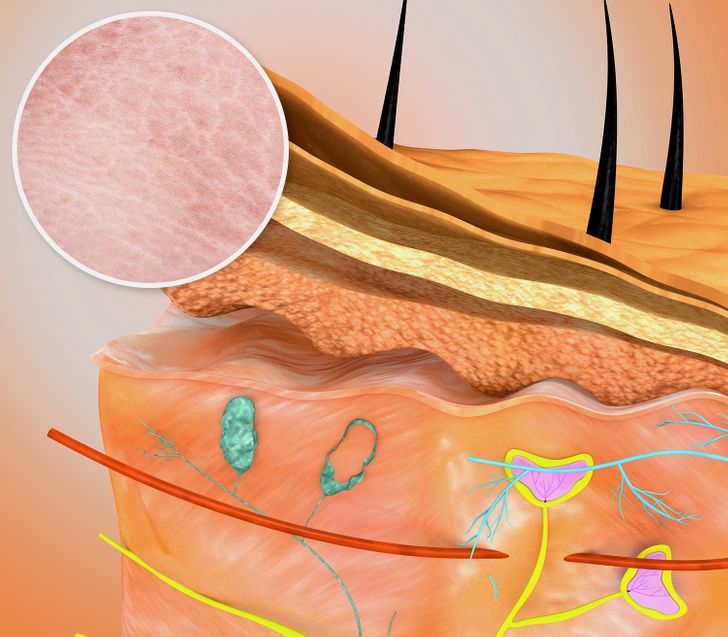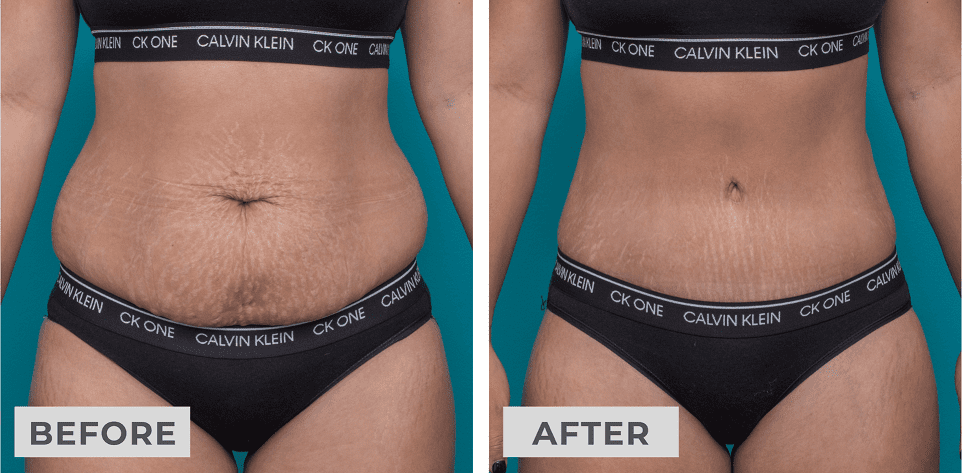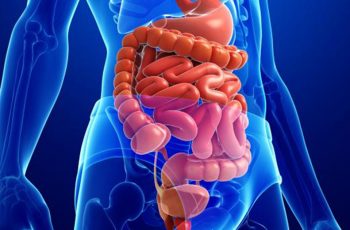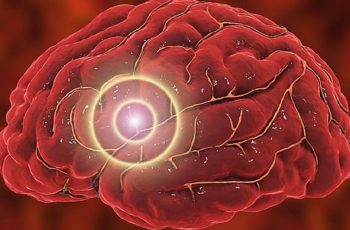Stretch marks after weight loss serve as a visual cue that you’ve shed pounds and inches. Both sexes share this trait. Losing weight has its downsides, one of which is the appearance of stretch marks. It’s not dangerous, and it often fades into the background. The skin’s flexibility might be reduced by underlying health issues, resulting in stretch marks. As a result, weight loss isn’t the only contributing element.
For the most part, it’s impossible to prevent stretch marks from forming. Stretch marks can be made to appear less prominently, however. As a result, stretch marks are a natural result of a person undergoing through various changes throughout time. As a result, practically everyone has a couple of their body.
What are Stretch Marks?
A stretch mark is a narrow stripe or line that can occur on your skin and is known as striae medically (striae distensae, striae atrophicus). In addition to arms, hips, thighs, chest, stomach, and buttalso , you’ll notice stretch marks in thess as well. Their coloration might range from whi, blued to blue to narrow pink to purplish. Stretch marks can form as a rvariousariety of factors, including rapid weight gain or reduction, pregnancy, the development of the breasts, hormonal fluctuations, and exercise. In addition, stretch marks are more likely to form if you have a hereditary predispositiprotein deficiency protein in your body.

It’s impossible to generalize how stretch marks will look on different people. However the hand makes it stand out from your natural skin. In the early stages, stretch marks may be raised and appear shiny, black, or both. Scars may be aacceptabler as fine, silvery indentations on the skin. Furthermore, women are more likely than males to get stretch marks, particularly on the breasts, while men are more likely to develop stretch marks on the lower back.
Causes
Stretch marks are more likely to appear after gaining weight than after losing it. Skin is stretched and torn as a result of gaining weight. Consequently, the skin’s collagen and connective structures are destroyed, causing stretch marks to form. Even though the skin is pliable, overstretching it in a short period of time can result in internal tears that develop scars known as stretch marks. Pubertal development, pregnancy, and weight increase are the primary culprits.

Stretch marks are caused by structural changes in collagen fibers and the loss of elastin and fibrillin fibers, according to a new study. It causes the skin to lose suppleness and vascularity, increasing the risk of stretch marks. When you’re pregnant, hormones weaken the fibers of your skin, increasing the risk of stretch marks. The skin on your stomach expands with the baby’s growth. In addition, as your breasts and thighs grow in size, you develop them there as well. Stretch marks appear after the first trimester of pregnancy and are sometimes preceded by itching. Stretch marks can also be caused by the use of steroids and certain medical diseases, such as Cushing’s disease and Ehlers-Danlos syndrome.
Stretch Marks After Weight Loss
Stretch marks that occur as a result of weight loss usually appear in the area where fat has been removed. For example, your thighs, arms, shoulders, and buttocks are the most frequent places for stretch marks to appear after weight loss. Stretch marks are most commonly caused by extra skin that remains following rapid weight loss. When you gain weight, your skin does stretch, but you won’t see the stretch marks just yet. These unseen stretch marks appear only when a significant weight loss occurs.
Pregnant women’s bodies endure remarkable changes in order to quickly regain their pre-pregnancy weight. After a lot of weight loss and gain, the loose skin often comes back. As a result, scarring and stretch marks are more likely to occur. Due to hereditary causes, 10 percent of women avoid stretch marks during post-pregnancy weight loss, whereas 90 percent of women do.

Stopping Stretch Marks When You’re Losing Weight
Stretch marks can’t be prevented entirely, but there are certain things you can do to minimize their appearance if you do get them. For instance, experts in the fields of cosmetics and dermatology claim that gradual weight loss can help prevent stretch marks. The amount of weight you lose in a given week has an effect on whether or not you get these marks. Keep your weekly weight loss goal to less than 1% of your body weight. Stretch marks may form if you exceed this limit. Reduces the risk of developing stretch marks following weight loss. Keeping your skin moisturized is the most crucial thing you can do to help it re-constrict.
Stretch Mark Prevention Alternatives
Getting the necessary daily dose of vitamin D
According to studies, insufficient vitamin D levels are linked to an increased risk of developing stretch marks. Oestrogen receptors rise in people with vitamin D insufficiency. Vitamin D deficiency has been linked to an increased risk of stretch marks in women. Getting the necessary daily dose of vitamin D helps to lower the risk of developing stretch marks. Some of the best sources of vitamin D are the aforementioned foods (as well as broccoli, mushrooms, and cheese). In addition, sunlight is an excellent source of vitamin D, which your body needs to function properly.

Drink water
While dry skin is more prone to stretch marks, soft skin is less likely to develop them during pregnancy. Drinking enough water throughout the day might help keep your skin looking and feeling its best. Coffee and other caffeinated beverages may increase your risk of acquiring stretch marks, so limit your intake.

Consuming a balanced diet
Your skin and overall health will benefit greatly from a well-balanced diet that includes plenty of vitamins, nutrients, and minerals. Make sure to include foods high in zinc, vitamin C, protein, vitamin D, and vitamin E in your diet because they can help improve your skin’s health and increase the formation of collagen.

Maintaining a healthy weight
Stretch marks can be avoided in the real world by maintaining a healthy weight. Collagen production is disturbed when your skin is overstretched or compelled to overgrow, leading to stretch marks. Stretch marks can be avoided if you maintain a healthy weight through proper eating and exercise.

How to Treat Stretch Marks
Your dermatologist can help you determine the best course of action if you’ve tried everything to get rid of the marks. The greatest and most individualized treatment solutions can be prescribed by your doctor. Pregnant women should be aware that some therapies have unfavorable side effects. Consider the pros and disadvantages of each medication before making a decision.
Stretch marks can be treated in a variety of ways, but here are the most common:
Topical Therapy
A study found that tretinoin cream 0.1 percent, a topical treatment for stretch marks, is helpful in reducing their appearance. Collagen formation and cell turnover are enhanced by the use of Tretinoin, a retinoid drug. During this period, it has the most impact on reducing stretch marks. No topical therapy can remove stretch marks, but they may decrease their appearance. Aside from the above, tretinoin and retinoic acid have been known to produce skin reactions such as peeling and redness, as well as increased sensitivity to the sun. As a result, it’s important to check with a doctor before using tretinoin.
Olive oil, coconut oil, bio-oil, and cocoa butter are other often used therapies for moisturizing the skin and reducing stretch marks caused by dryness. There is, however, little evidence to support the efficacy of topical treatments. So even if this isn’t a sure thing, there is no harm in trying it out.
Hyaluronic acid is another excellent topical treatment for stretch marks because it stimulates the formation of collagen, which reduces the appearance of stretch marks. Trofolastin, silicone, glycolic acid, trichloroacetic acid, ascorbic acid, and pirfenidone are some of the other topical agents in use.
Laser and Other Procedures
Another common treatment for stretch marks is laser therapy. However, it is most effective when used in the early stages of stretch mark formation, while they are still red and raw. Reduced redness and slowing the growth of stretch marks are some of the benefits of laser therapy.
Stretch marks that are more than a year old can be treated with fractionated, IPL, and excimer lasers. These laser treatments aim to increase the production of collagen. Plastic surgery, such as abdominoplasty, is another severe approach to stretch mark elimination. You can reduce the appearance of stretch marks on your body by removing the excess skin that is left after weight loss. Risks and invasiveness accompany these procedures, though.
Microneedling
There are several ways to reduce the appearance of stretch marks, but micro-needling therapy is one of the most effective. As a result, the look and texture of stretch marks have improved. Typically, three micro-needling treatments at four-week intervals are required for long-term benefits.
How to Make Your Stretch Marks Less Visible
You’re not alone if you still have stretch marks. Stretch marks affect people of all ages, from newborns to the elderly. It’s possible to hide or lessen the look of stretch marks if that concerns you.

Using Self Tanners
Stretch marks can be filled in with sunless self-tanners, making them appear more like the rest of your skin. Regular tanning, on the other hand, isn’t going to help because it can hurt your skin’s health.
Using Makeup
Using foundation makeup that matches your skin tone can help disguise stretch marks for brief periods.
Topical Cream or Ointment
Stretch marks can be made to appear less noticeable with the use of a variety of topical treatments. Find out what’s ideal for your skin type by doing some research.
Wearing Clothes with More Coverage
To hide stretch marks, wear long sleeves or long pants. However, it would help if you never allowed these scars to affect your self-esteem or wardrobe choices. Wear what makes you feel most at ease.
Conclusion: Stretch Marks After Weight Loss
There is no way to eliminate stretch marks from the skin thoroughly. Pregnancy, growth spurts, and health issues can cause rapid weight gain. You may also feel self-conscious about your stretch marks after reducing weight. Stretch mark treatments tighten and fill your skin, making them less visible. Stretch marks can be less noticeable by using self-tanner or tinted body lotion, for example. Topical creams with calming and moisturizing ingredients can also help with exfoliation, whether physical or chemical.
Consult your dermatologist about more invasive treatments if none of these work for you. However, these signs may indicate illnesses like Cushing syndrome or Ehlers-Danlos syndrome, both of which are rare. As a result, if you have stretch marks but haven’t gained or lost weight, you should see your doctor.
Frequently Asked Questions (FAQs)
How do you prevent stretch marks when losing weight?
Keep your weight reduction rate under control to prevent stretch marks. Avoid shedding more than 1% of your body weight in a week. As an additional precaution, you should drink enough water and consume a well-balanced diet rich in vitamins and minerals. In addition, take foods rich in zinc, vitamin C, and vitamin D to keep your immune system strong. As a result, collagen production increases, and stretch marks are less visible.
Do stretch marks go away when you lose weight?
Even if you lose weight, stretch marks are unlikely to disappear. Rapid weight loss may raise the chance of developing stretch marks. However, your weight gain is responsible for most of your stretch marks. You can see them more clearly when you lose weight.
Why am I getting stretch marks if I’m losing weight?
When people rapidly gain or lose weight, they are more likely to get stretch marks. When you lose weight, for example, your skin rapidly shrinks and expands. Stretch marks might result from this, as the collagen and elastin in your skin are ruptured. However, stretch marks are less likely to appear if you lose weight gradually.
How do I tighten my stomach skin after weight loss?
Stretch marks on the stomach can't be cured right away. It is possible to lessen their visibility with topical treatments. For example, hyaluronic acid and retinoids like tretinoin can boost collagen production. As a result, the loose skin on your stomach is given more rigidity or tightness.
Can exercise reduce stretch marks?
While regular exercise has various health benefits, stretch marks will not disappear because you do it every day. Stretch marks are scars, and no amount of training will be able to remove them or repair the elastin and collagen that have been ruptured.
Does skin shrink after weight loss?
Due to its elasticity, skin can contract due to weight loss or muscle gain. During weight loss, the skin might lose some of its elastic capacity if extra fat is left in the body for an extended period. As a result, slight to moderate weight loss might cause the skin to retract or shrink. Rapid weight loss may be an exception to this rule.
Is it fat or loose skin?
Most of the time, sagging skin results from excess subcutaneous body fat that the outer layer of skin has covered up. Soft fat is found in the subcutaneous layer. It's pliable and jiggly, with a sagging skin-like texture.




